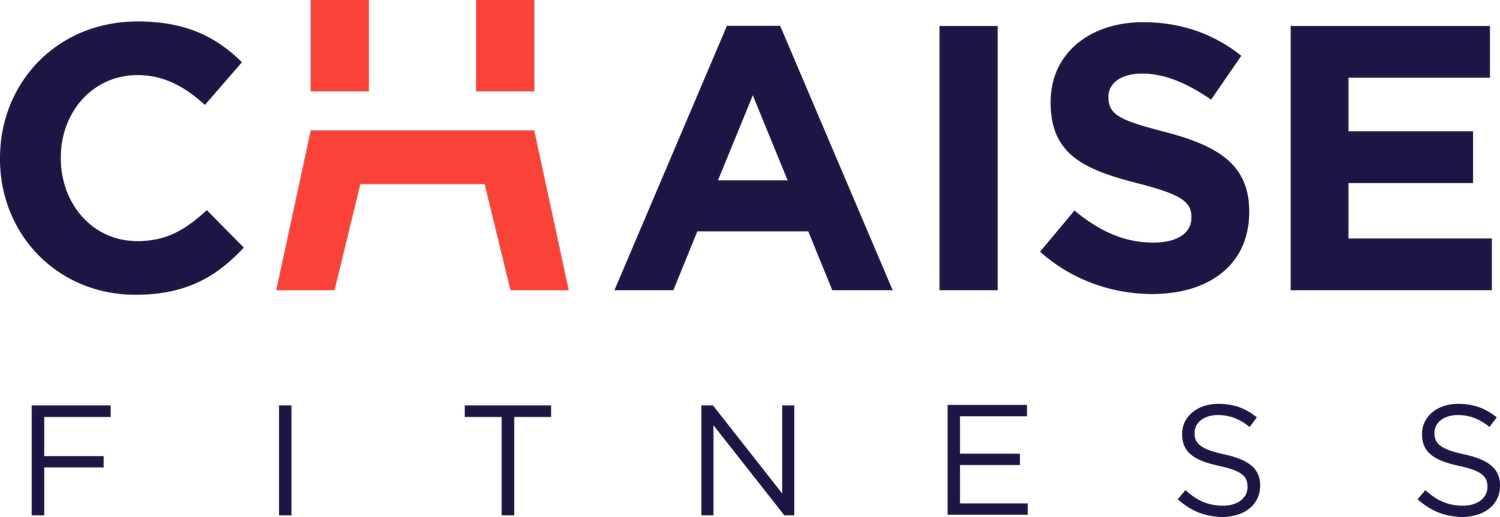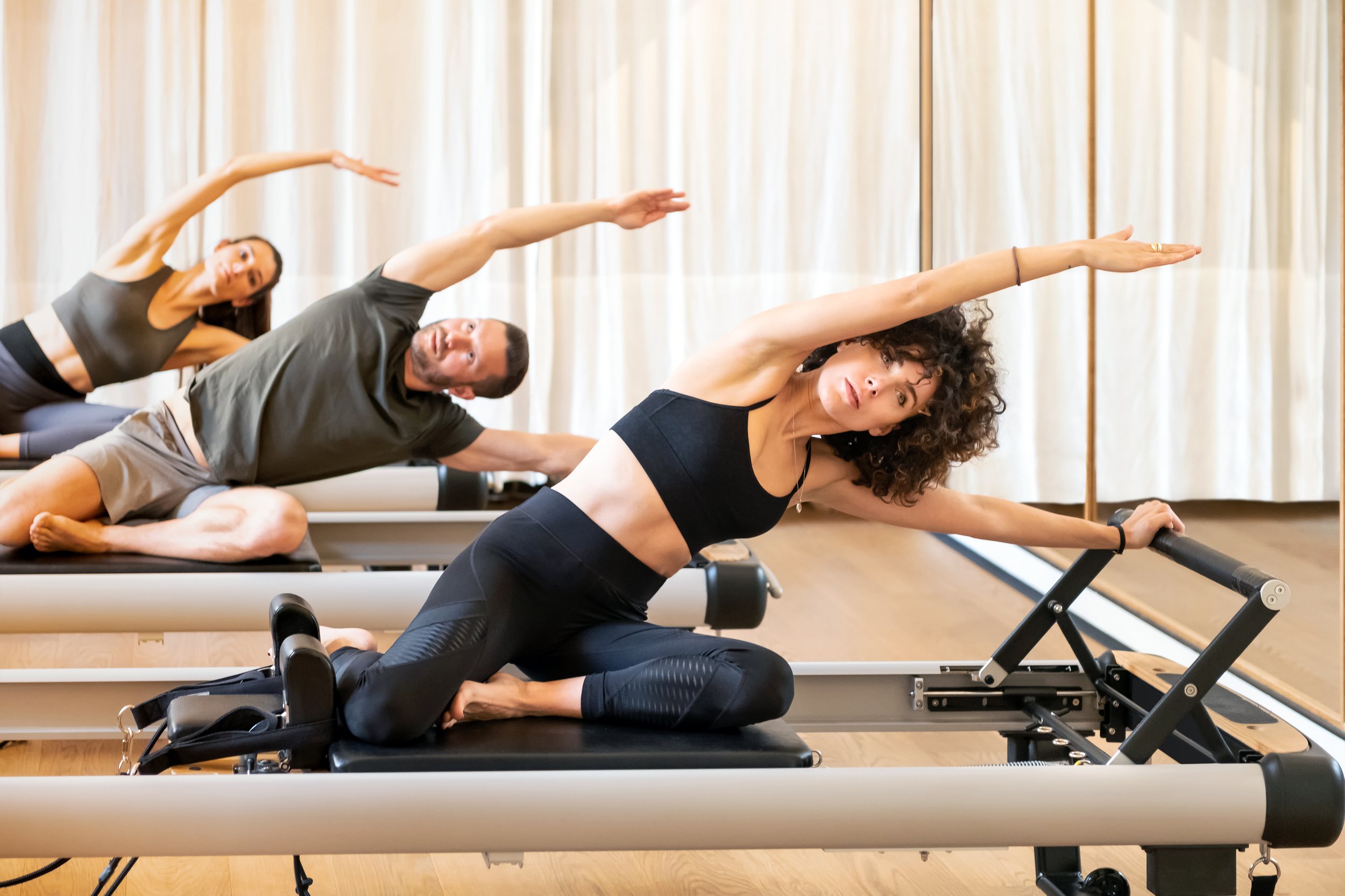Pilates Breathing
In Pilates, breathing is done in a specific way which is different than in dance, yoga, or team sports. Breathing sustains life by providing oxygen needed for the body’s metabolism and removing the by-product of these reactions, carbon dioxide. Deep breathing is more efficient than shallow breathing. As oxygen is fully exchanged with carbon dioxide, then heart rate is slowed, blood pressure is stabilized, and stress is lowered. Breath is a foundation for Pilates movement designed to aid muscle activations for each exercise and build balance in the core.
Helps support correct posture
In Pilates, lateral thoracic and intercostal breathing is the emphasized breathing pattern. In this technique, the breath is drawn upward and out of the low belly with focus on redirecting the breath into the back of the body and the sides of the rib cage to coordinate with movement.
INHALE through the nose, directing the breath into the sides of the ribs while expanding the ribs laterally. Keep the abdominal muscles pulled upward and inward.
EXHALE through the mouth, a slow, forceful exhalation, closing the rib cage down
Correct posture must be maintained to fully activate the exercises. In upper body exercise the movement should be in your ribcage only, with no movement of your shoulders. Be sure to relax your neck and jaw while keeping the spine straight. While lateral breathing is the technique to use to keep the abdomen tight on inhale. Do not keep the abdomen always contracted, core strength and stability are built by belly-expanding breaths as the muscles are drawn in and up. Maintaining this posture protects the back during challenging exercises.
Decreases stress
Pilates breathing pattern varies by exercise to help recruit the appropriate musculature to lengthen the body, to focus the mind, to decrease stress, and to increase calm. Using the five-count inhale and the five-count exhale oxygenates the muscles to maximize performance and relieve stress. It is important to never hold your breath. Better to breath normally, than to hold your breath. If you have nasal congestion, you won't be able to breathe in fully through your nose as is typically directed. In that case, breathe in and out through your mouth.
Increases energy
Each exercise in Pilates has a breathing pattern associated with it which increases energy and performance. Good breathing helps provide compression and decompression that reinforces the natural curves of the spine. The spine should get longer on inhale and shorter on exhale. Breathing maintains muscle support on exhale so that the body does not deflate. Tall posture must be maintained to be able to move in any direction. Breathing supports the body’s ability to bend forward, backwards, sideways, or twist by keeping enough joint space in the spine. Effective breathing provides the energy to exercise and brings energy into every day living.
Relieves pain
Breathing can helpregulate the heart rate and blood pressure, which regulates the pain response in the brain. Deep breathing, also known as diaphragmatic breathing, can help manage chronic pain and it is an important technique used to help injured workers. Stabilizer muscles of the trunk in the human body refers to the deep muscles that contribute to stabilization. Stabilizer muscles in the waist region include the diaphragm, pelvic floor muscles, transversus abdominis, internal abdominal oblique, and multifidus. Pilates breathing increased activities of the trunk stabilizer muscles. Activation of the trunk muscle indicates that practicing Pilates breathing while performing lifting tasks will reduce the risk of trunk injuries.
Improves immunity
Pilates breathing doesn't just improve immunity via mechanical and physiological processes. It also improves your health by calming the mind. The emphasis on breathing and mindful movement encourages the fight or flight sympathetic nervous system to quiet, reducing stress which research strongly shows impairs immunity. Regular exercise also improves sleep quality, which is necessary for healthy immune systems. There’s no guarantee that doing Pilates regularly will prevent sickness this cold and flu season. However, there is plenty of anecdotal evidence and common sense suggests that a regular practice at least 3 times a week, along with other healthy choices around sleep and nutrition, can set your body up so that it can better fend off illnesses.
Lowers blood pressure
Taking six deep breaths within 30 seconds significantly reduces blood pressure. This 30-second breathing exercise is a simple and easy way to help manage stress and promote relaxation. On study demonstrated that Mat Pilates benefits cardiovascular health by decreasing blood pressure, arterial stiffness, and body fatness in young obese women with elevated blood pressure. The best way to lower high blood pressure is to make small changes over weeks, so that the body can adapt to the change. If your blood pressure is dangerously high, over 180/110, and needs to be lowered quickly, it must be done in a healthcare setting.
Improves digestion
Pilates can be a great path to restoring digestive health. It does this by stimulating your digestive system through encouraging deep breathing and by massaging the stomach organs. This is mainly achieved through twisting exercises, inversions, and abdominal work.
Stimulates the lymphatic system
Pilates is great for stimulating lymphatic flow because it gets the body twisting and turning in all planes and orientations. Pilates focuses on moving and mobilizing joints. This is particularly useful when it comes to lymphatic movement and detoxification because most of these lymph nodes are found at joints.
Summary
Pilates breathing potentiates the exercises. This balance between breath and exercise helps support correct posture, decrease stress, and improve energy. Physiologic benefits include relief of pain, improved immunity, lowered blood pressure, improved digestion and stimulated lymphatic system. Pilates balances the mind-body connection to improve daily life.
Check Out ChaiseFitness for the Best Pilates Experience in Manhattan!
At ChaiseFitness, we believe that anyone can be fit—no matter what skill level or body type. This belief inspired the creation of our patented Reinvention Method, which is for everyone—the athlete, the dancer, the beginner, the advanced, the rebuilder. We blend Pilates, ballet, and strength training and equip you with a chair and overhead bungees so that you work out all your muscles every time. We are located in the Upper East Side in Manhattan. For more information, you can contact us at (973)996-2063, or visit our website.


